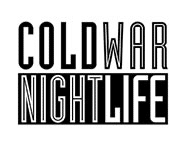There must be an army of elves working in Parralox‘s studio. So far, this year, not only have they given us a complete reboot of their first album, Electricity; not only have they secured a support slot for Erasure in London; not only have they given us one of the singles of the year (“Crying on the Dancefloor”) – they have also found time to knock out a classy new EP, just in time for seasonal giving. Holiday ’14 is a sheer stocking filled with sexy surprises, like covers of Human League classics and enough originals and holiday tracks to keep you humming into the New Year, whether you’ve been naughty or nice.
“Little Drum Machine Boy” sets the tone with an electronic spin on the Christmas standard by the non-observant John von Ahlen. Unlike the sentimentality of Bowie and Crosby’s version, von Ahlen’s take is a vocoder-charged electro-crooner. It bleeds perfectly into a cover of Book of Love’s “With a Little Love.”
“You’ve Lost that Loving Feeling,” of course, wasn’t a Human League original, but the production on their debut album, 1979’s Reproduction, gave it a new frame of reference. The fizzing sounds of the (now) vintage equipment used by the League provided layers of depth that weren’t achievable even with Phil Spector’s Wall of Sound, and their choice of a Righteous Brothers song was typically contrary at a time when the influence of punk was still strong. Von Ahlen follows the Sheffield boys’ approach, but also finds a way to add a little respect for Vince Clarke along the way.
“The Path of Least Resistance” and “The Word Before Last” – two more Reproduction-era classics – get a modern make-over, while retaining the killer combination of philosophy and rhythmic tension that made the League so important in their original form.
The final present in the stocking is a charming von Ahlen instrumental, with a sparkle like that in Santa’s eye. It comes through Bandcamp, rather than down your chimney, but it’s just the thing for a holly jolly Synthmas!

 The proof comes in the form of A Film of Faith and Devotion, a documentary from director Henrik Thyselius. Twelve Gothenburg devotees invite the audience into their homes or to sit down for a drink, sharing their collections of recordings and memories of discovering and following Depeche Mode.
The proof comes in the form of A Film of Faith and Devotion, a documentary from director Henrik Thyselius. Twelve Gothenburg devotees invite the audience into their homes or to sit down for a drink, sharing their collections of recordings and memories of discovering and following Depeche Mode.